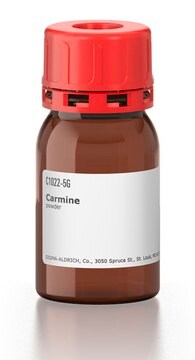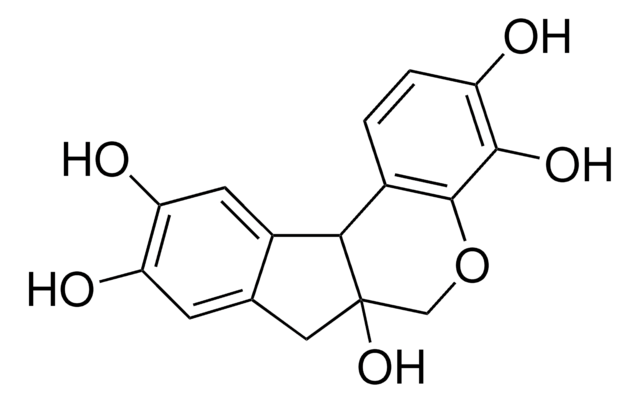213357
Mercury(II) oxide red
ACS reagent, ≥99.0%
Synonym(s):
Mercuric oxide red
About This Item
Recommended Products
grade
ACS reagent
Quality Level
Assay
≥99.0%
form
powder
reaction suitability
reagent type: catalyst
core: mercury
impurities
≤0.005% N compounds
≤0.03% insol. dil. HCl
reduction residue
≤0.025%
mp
500 °C (dec.) (lit.)
anion traces
chloride (Cl-): ≤0.025%
sulfate (SO42-): ≤0.015%
cation traces
Fe: ≤0.005%
SMILES string
O=[Hg]
InChI
1S/Hg.O
InChI key
UKWHYYKOEPRTIC-UHFFFAOYSA-N
Looking for similar products? Visit Product Comparison Guide
Related Categories
Signal Word
Danger
Hazard Statements
Precautionary Statements
Hazard Classifications
Acute Tox. 1 Dermal - Acute Tox. 2 Inhalation - Acute Tox. 2 Oral - Aquatic Acute 1 - Aquatic Chronic 1 - STOT RE 2
Target Organs
Kidney
Storage Class Code
6.1B - Non-combustible acute toxic Cat. 1 and 2 / very toxic hazardous materials
WGK
WGK 3
Flash Point(F)
Not applicable
Flash Point(C)
Not applicable
Choose from one of the most recent versions:
Certificates of Analysis (COA)
Don't see the Right Version?
If you require a particular version, you can look up a specific certificate by the Lot or Batch number.
Already Own This Product?
Find documentation for the products that you have recently purchased in the Document Library.
Customers Also Viewed
Our team of scientists has experience in all areas of research including Life Science, Material Science, Chemical Synthesis, Chromatography, Analytical and many others.
Contact Technical Service











